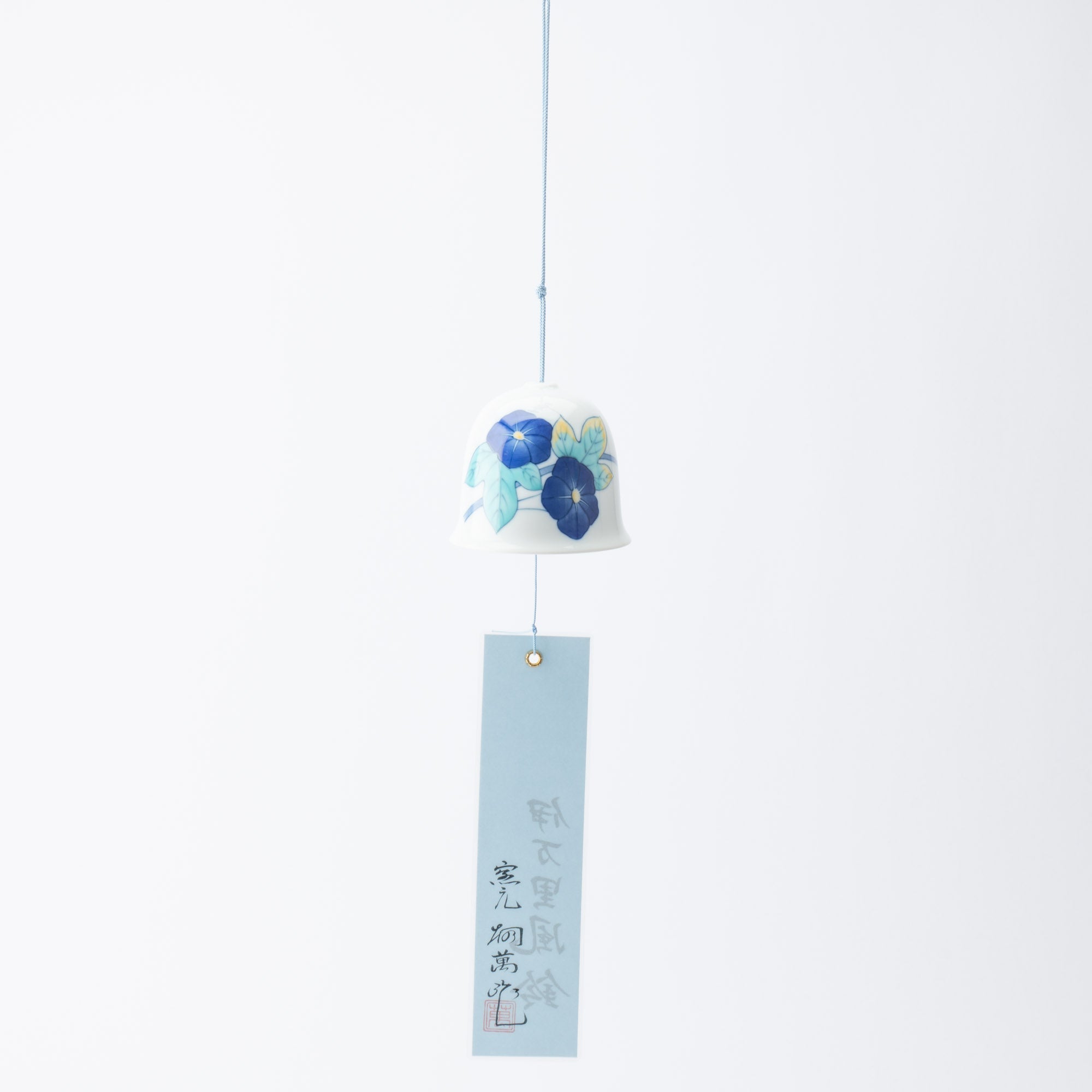
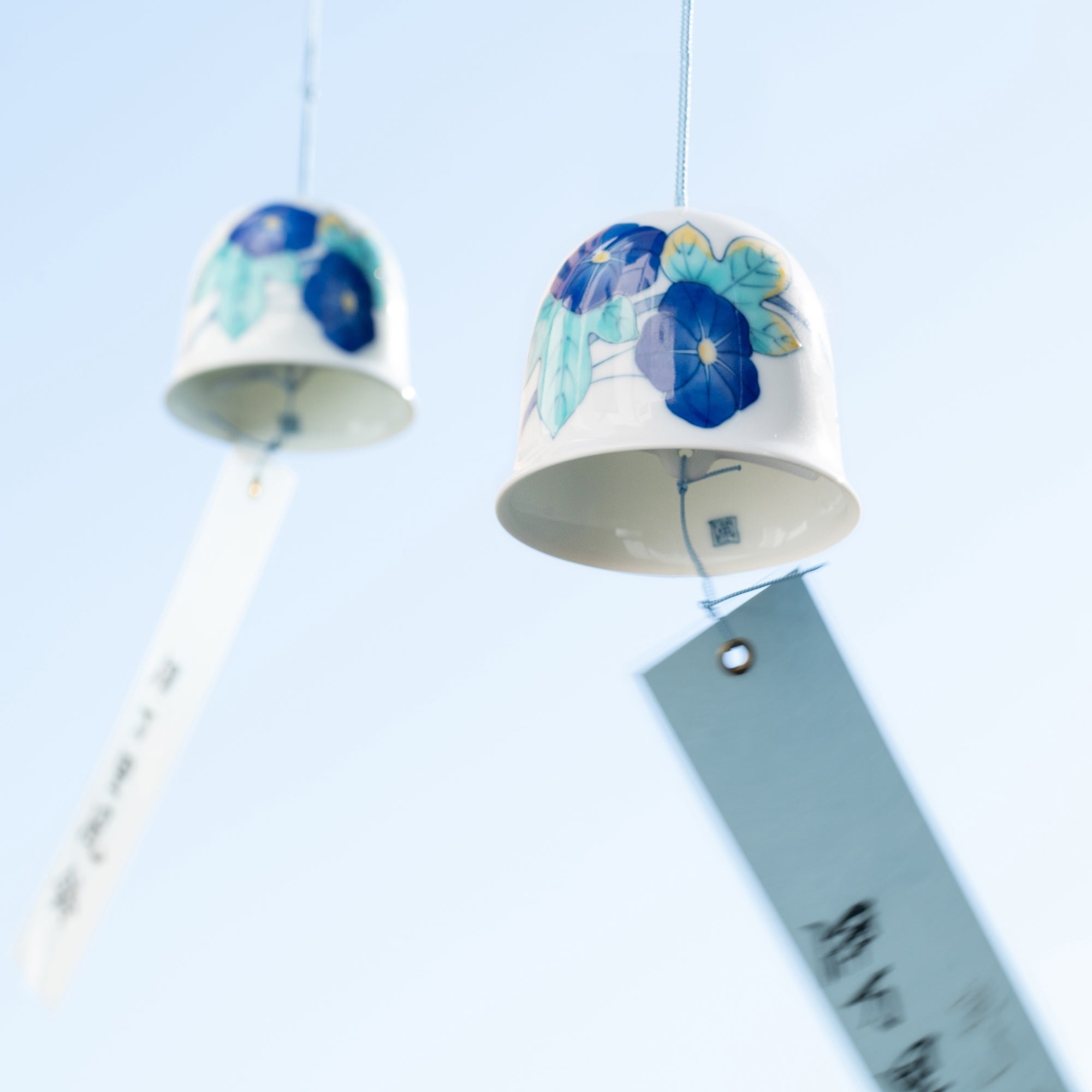
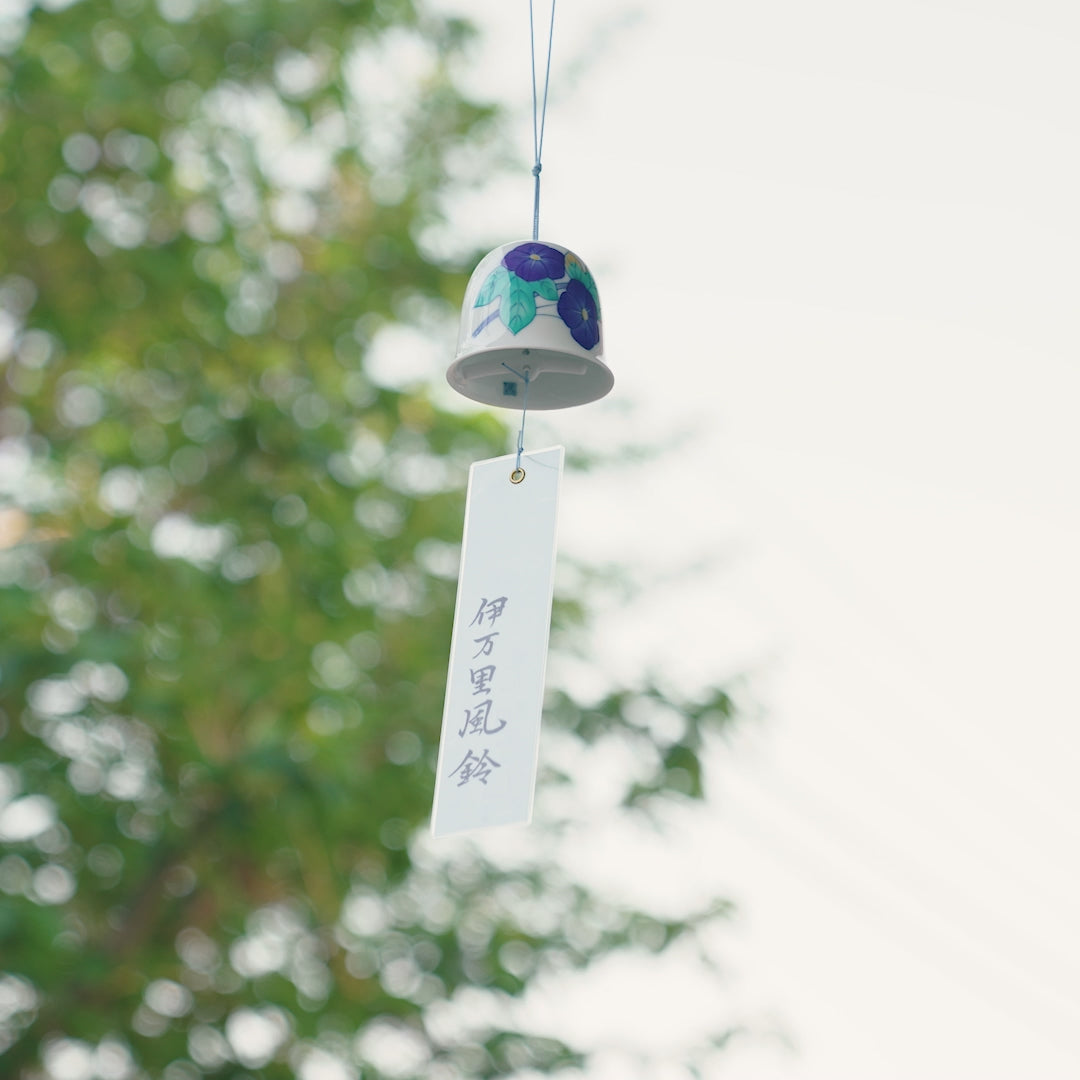
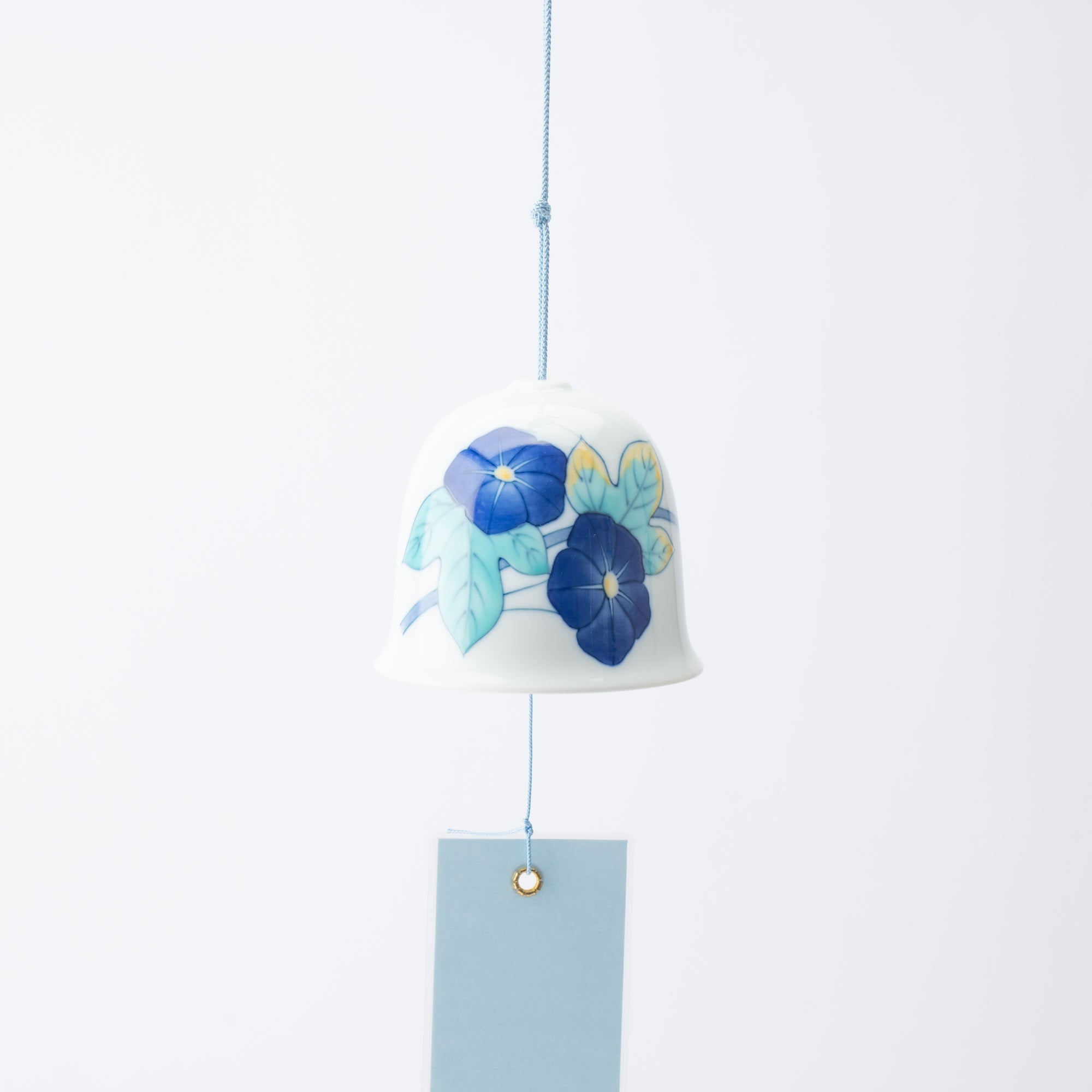
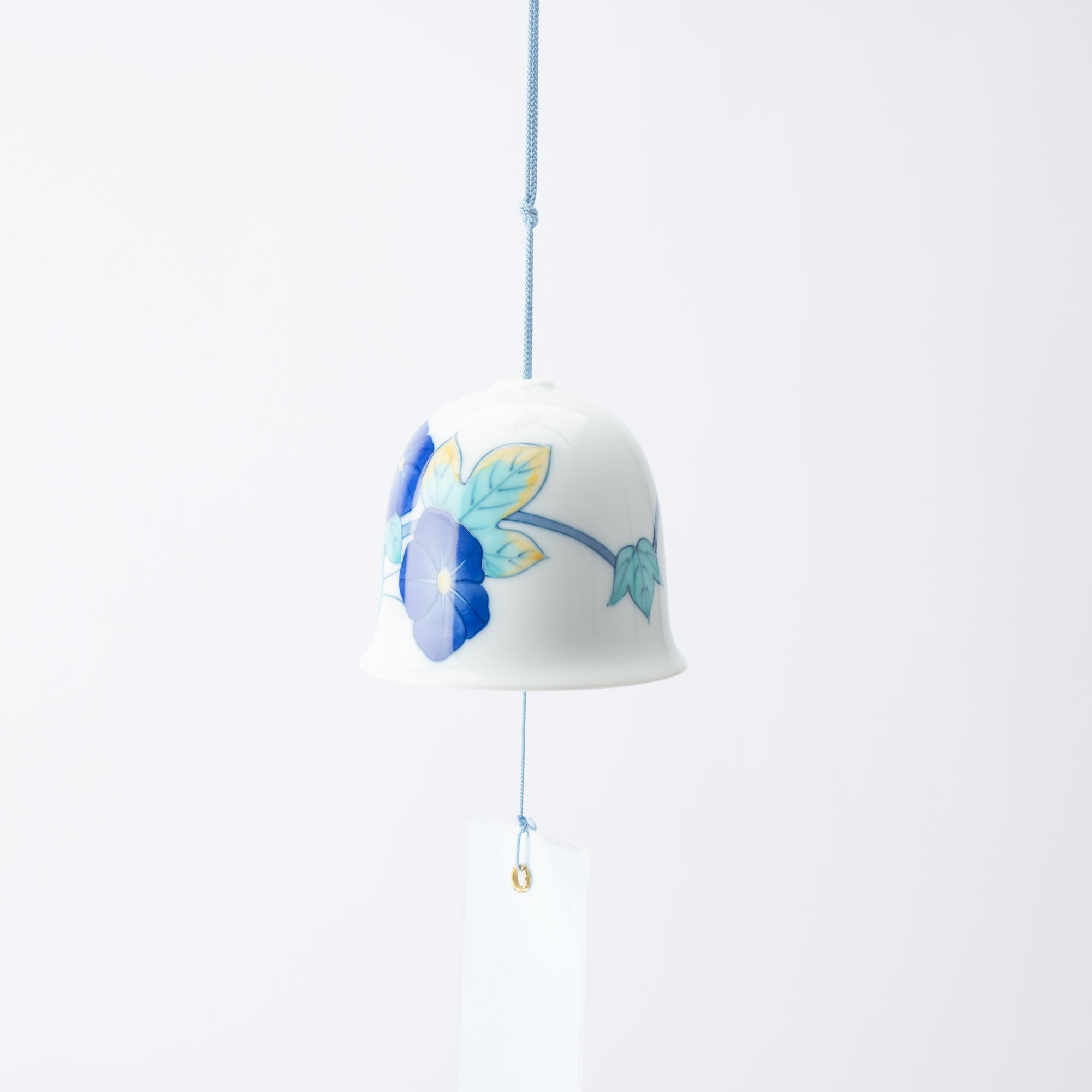
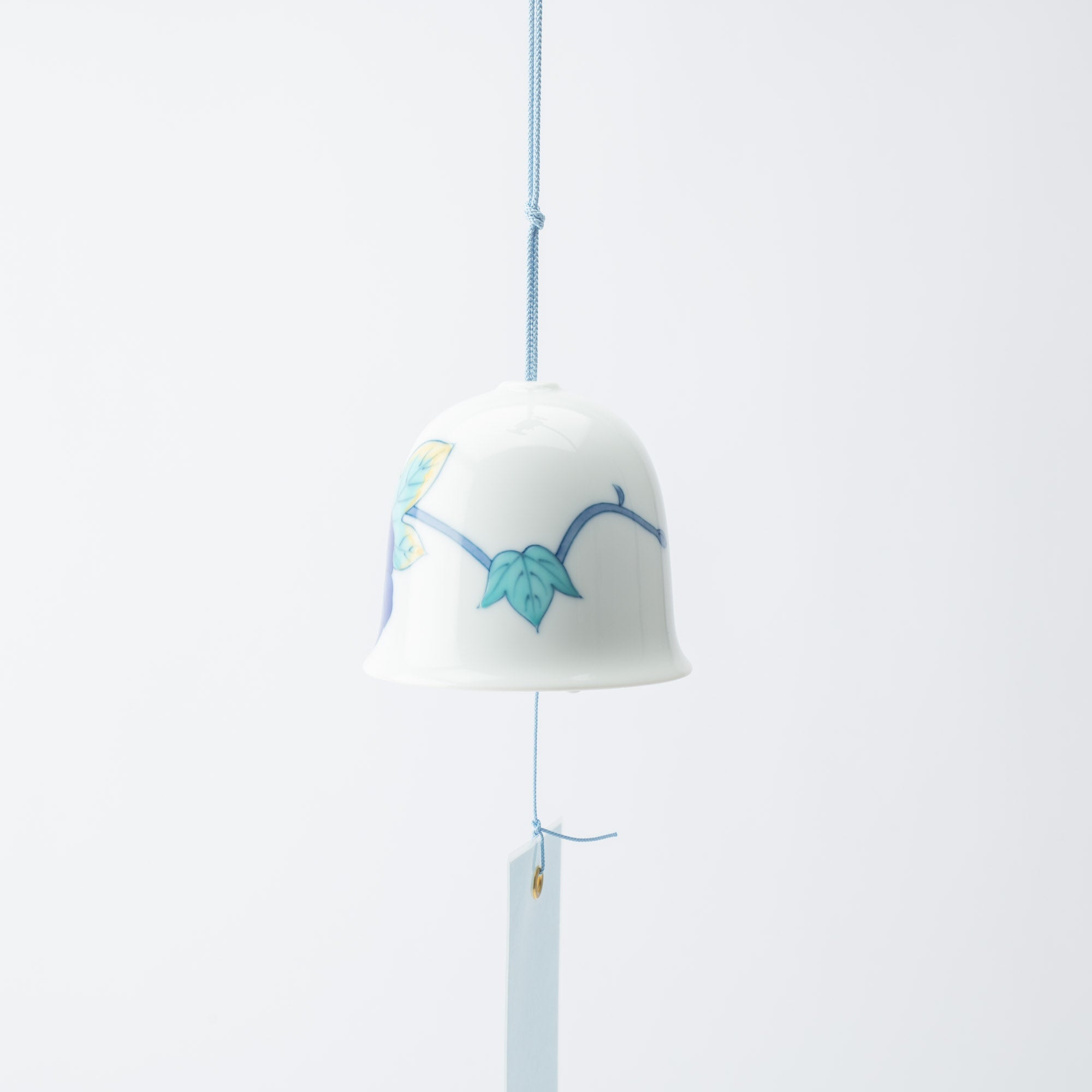
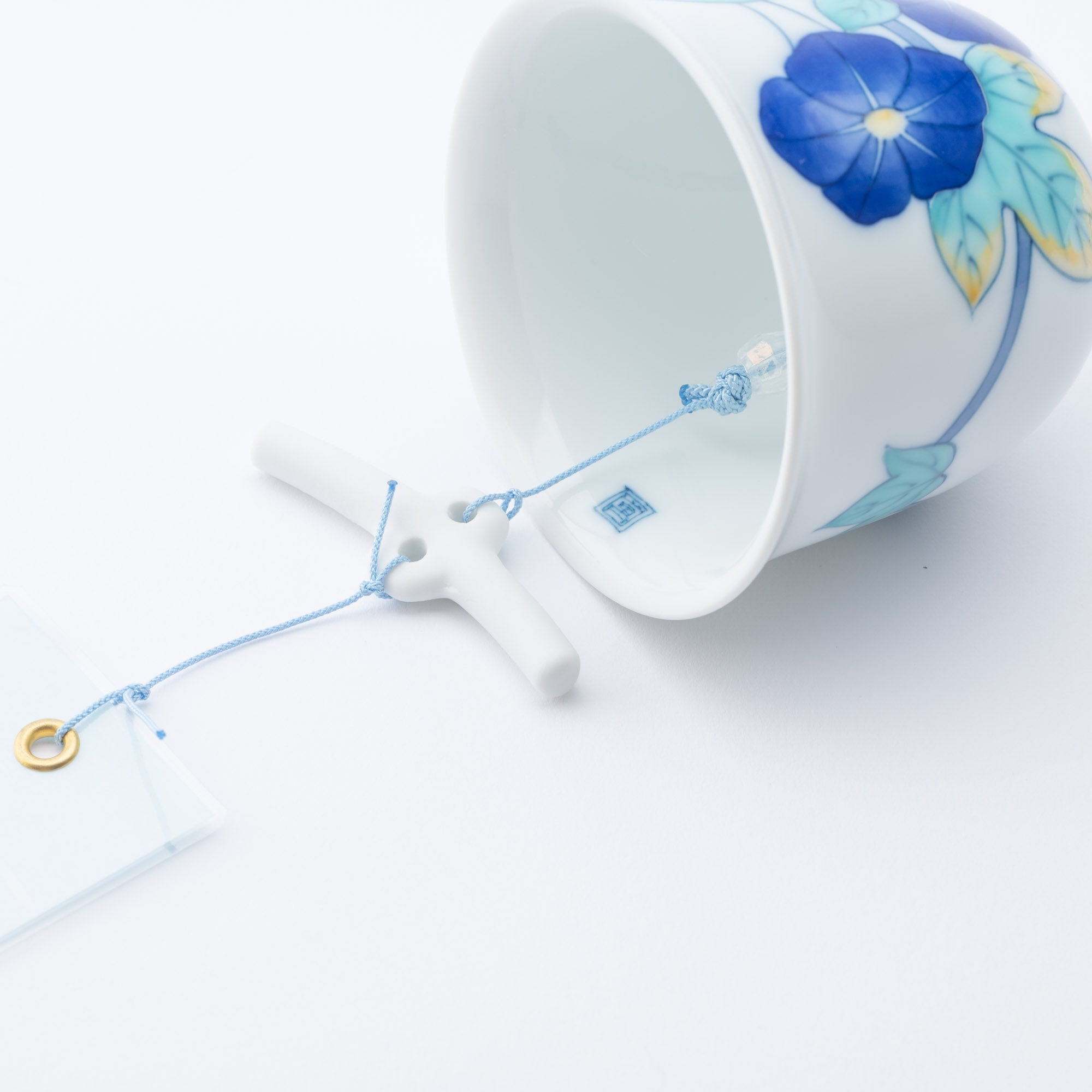

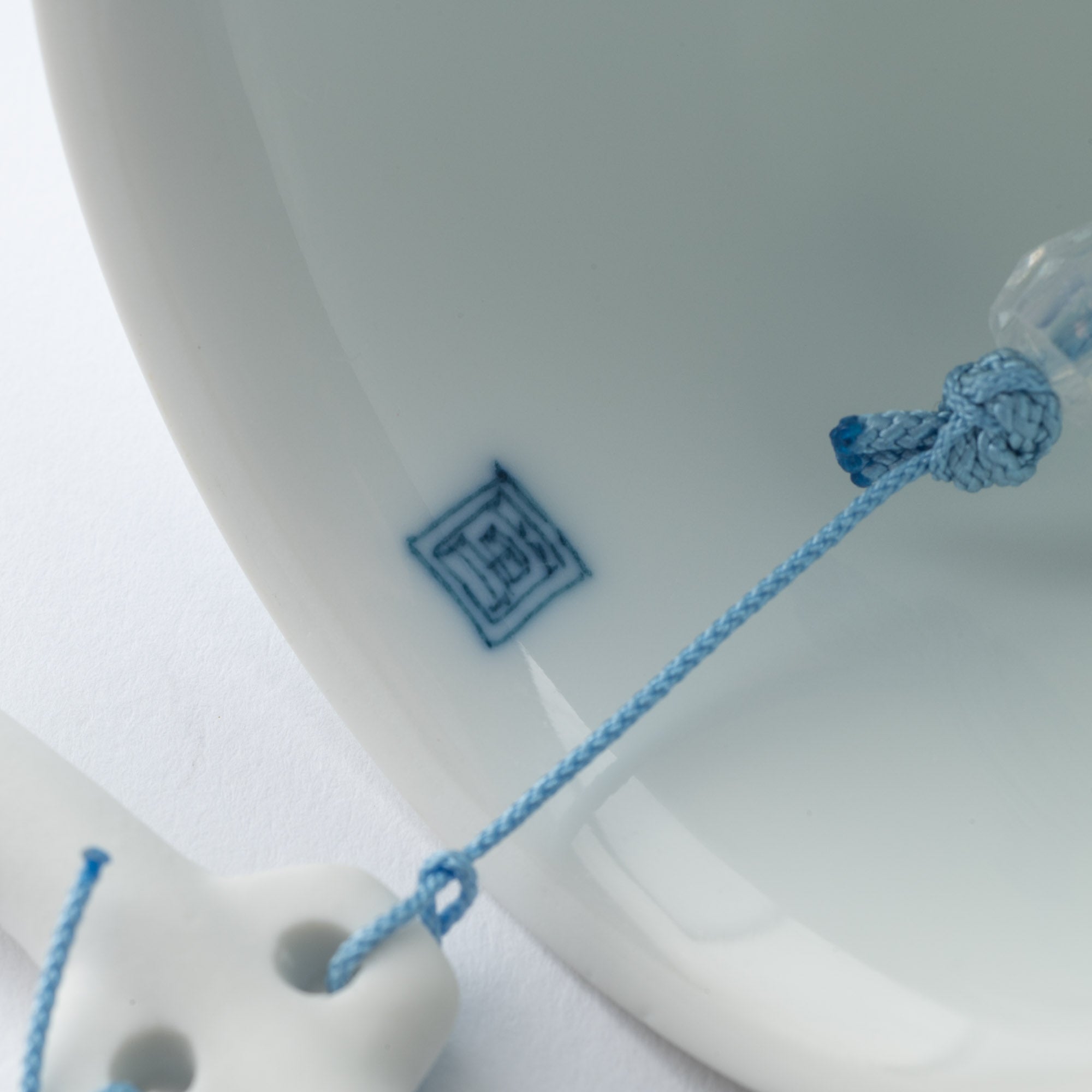
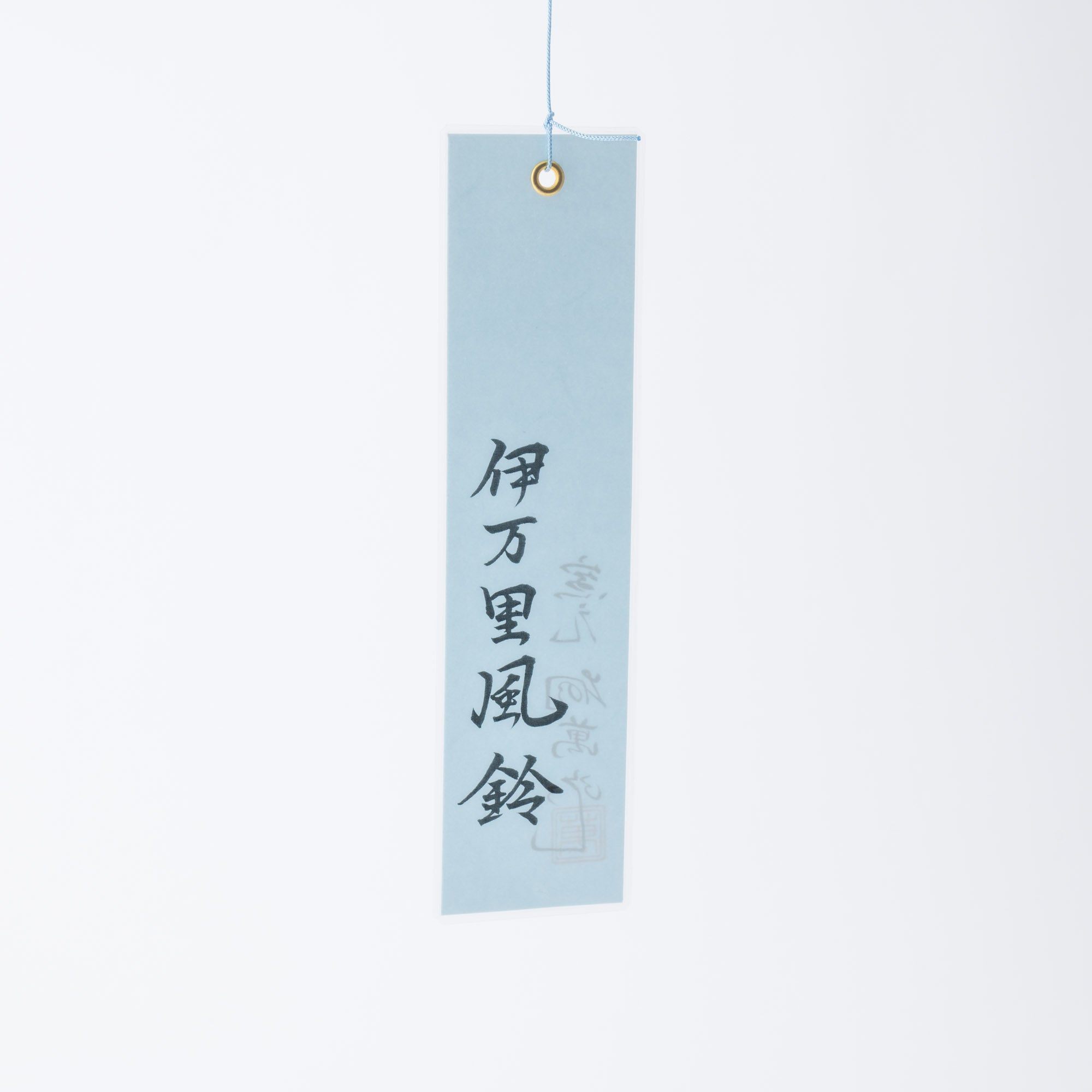
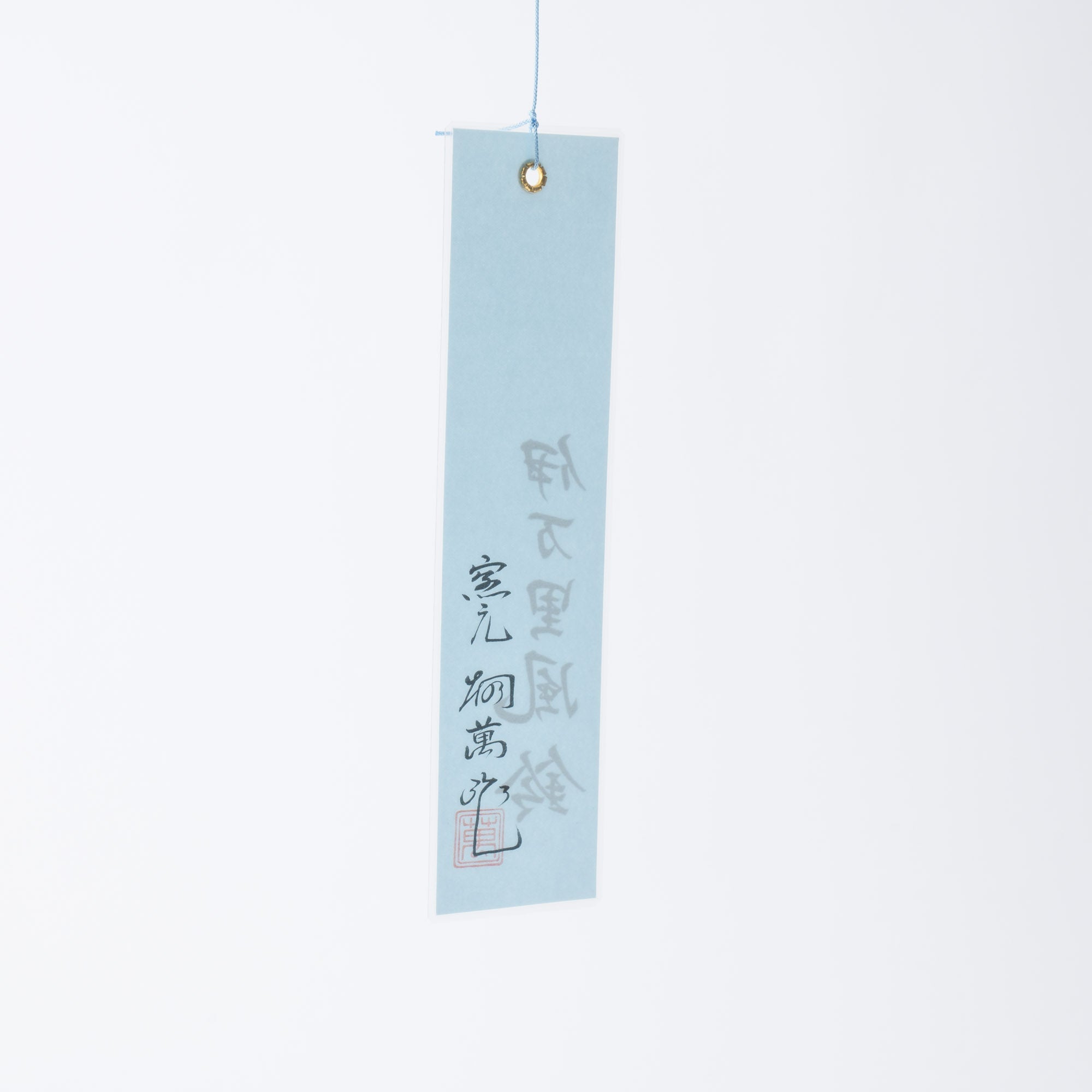
Nabeshima Morning Glory Long Wind Bell
Estimated Shipping Widget will be displayed here!
This wind bell has a beautiful morning glory design in the Iro-Nabeshima (colored Nabeshima) style on beautiful white porcelain. The painting emphasizes the blue color to create a sense of coolness.
The Japanese morning glory is a summer flower, introduced from China in the Nara period (710 CE–794 CE). Its Japanese name asagao, meaning "morning face," is said to have originated from its characteristic of blooming early in the morning, and was compared to the face of a morning beauty.
The style of iro-Nabeshima has traditional rules, consisting of one color for sometsuke (indigo blue) and three colors for akae (red, yellow, and green). After the outline is drawn in indigo blue gosu pigment, overglaze painting in red, kibi (yellow), and moe (green) is used to color in the design. Although it may seem that many colors are used, in fact, only three are applied—a hallmark of iro-Nabeshima—and its beauty is regarded as the pinnacle of Japanese porcelain.
DETAIL
| Quantity | 1 |
| Size |
[Wind Bell] D 7.7 cm (3 in) x H 7.8 cm (3.1 in) [Clapper] D 5.9 cm (2.3 in) x H 2.2 cm (0.9 in) [Strip of paper] L 18.4 cm (7.2 in) x W 4.9 cm (1.9 in) |
| Material | Porcelain |
| Microwave | No |
| Dishwasher | No |
Maker / Brand / Series
Origin
Notes
Choose options











Estimated Shipping Widget will be displayed here!
Japanese Wind Bells
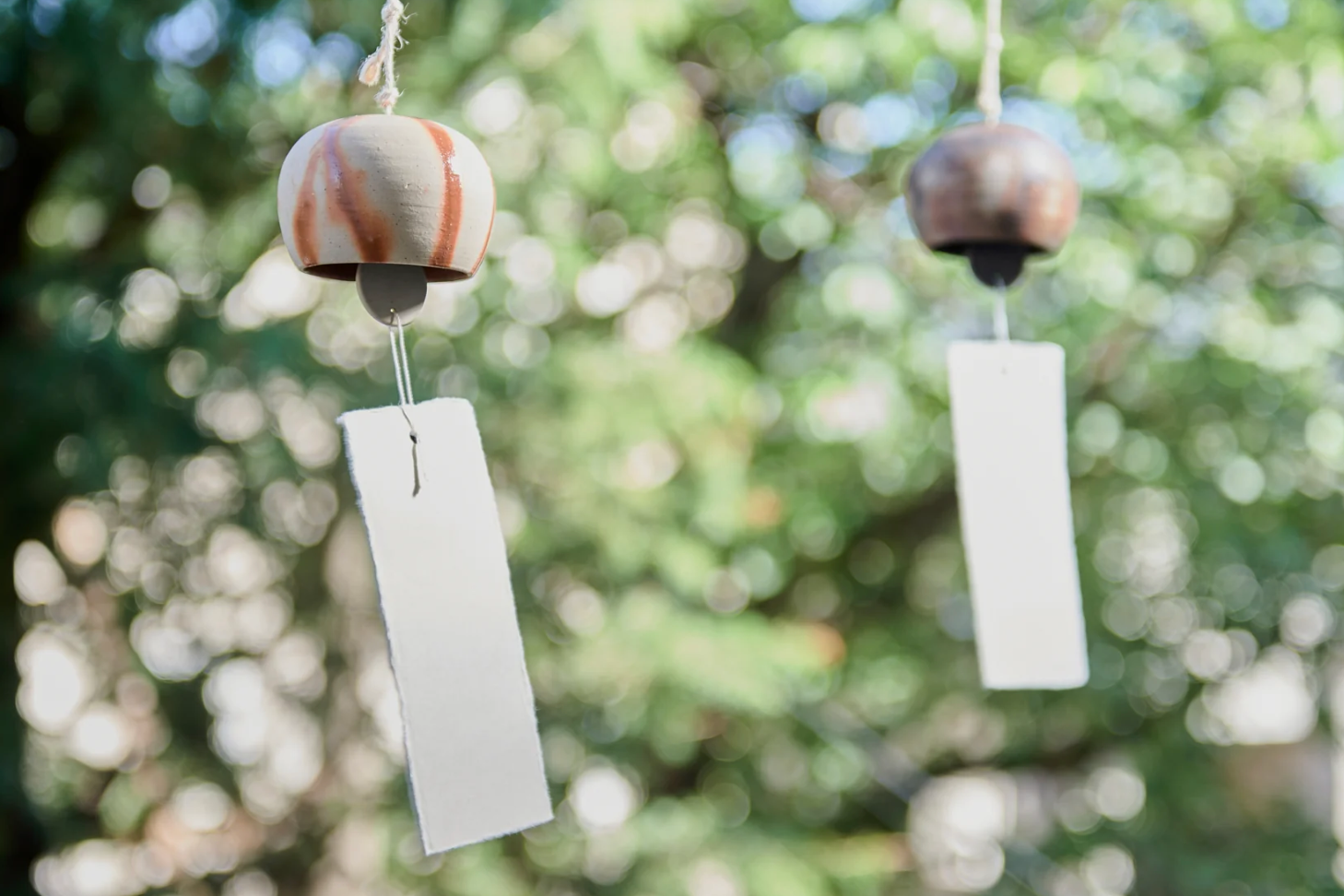
International Shipping
Multiple shipping options available, with discounted shipping for orders over 500000 and free shipping over 5000000.
Insured shipping service
Full compensation for any accidental damage that may occur during transit.
Made by Japanese craftsmen
Fair prices plus free furoshiki wrapping with every order.

